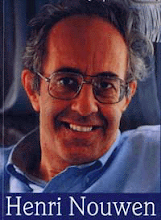
The Power of Half
On Saturday,
The New York Times columnist Nicholas Kristof reports a story about Kevin Salwen, a writer and entrepreneur in Atlanta, was driving his 14-year-old daughter, Hannah, back from a sleepover in 2006. While waiting at a traffic light, they saw a black Mercedes coupe on one side and a homeless man begging for food on the other.
“Dad, if that man had a less nice car, that man there could have a meal,” Hannah protested. The light changed and they drove on, but Hannah was too young to be reasonable. She pestered her parents about inequity, insisting that she wanted to do something.
“What do you want to do?” her mom responded.
“Sell our house?”Warning! Never suggest a grand gesture to an idealistic teenager. Hannah seized upon the idea of selling the luxurious family home and donating half the proceeds to charity, while using the other half to buy a more modest replacement home.
Eventually, that’s what the family did. The project — crazy, impetuous and utterly inspiring — is chronicled in a book by father and daughter scheduled to be published next month: “The Power of Half.” It’s a book that, frankly, I’d be nervous about leaving around where my own teenage kids might find it. An impressionable child reads this, and the next thing you know your whole family is out on the street.
At a time of enormous needs in Haiti and elsewhere, when so many Americans are trying to help Haitians by sending everything from text messages to shoes, the Salwens offer an example of a family that came together to make a difference — for themselves as much as the people they were trying to help.
The Salwens pledged $800,000 to the
Hunger Project to sponsor health, microfinancing, food and other programs for about 40 villages in Ghana. They traveled to Ghana with a Hunger Project executive, John Coonrod, who is an inspiration in his own right. Over the years, he and his wife donated so much back from their modest aid-worker salaries that they were among the top Hunger Project donors in New York.
The Salwens also are troubled that some people are reacting negatively to their project, seeing them as sanctimonious showoffs. Or that people are protesting giving to Ghana when there are so many needy Americans.
Still, they have inspired some converts. The people who sold the Salwens their new home were so impressed that they committed $100,000 to the project. And one of Hannah’s closest friends, Blaise, pledged half of her baby-sitting savings to an environmental charity.
In writing the book, the Salwens say, the aim wasn’t actually to get people to sell their houses. They realize that few people are quite that nutty. Rather, the aim was to encourage people to step off the treadmill of accumulation, to define themselves by what they give as well as by what they possess. Said Hannah,
“Everyone has too much of something, whether it’s time, talent or treasure. Everyone does have their own half, you just have to find it.”___________
If you have not done so already, please Subscribe! to Homeless In America and become a hero's voice of the poor. Invite your family and friends to Subscribe! The top right column of the main page. Scroll down and vote in the polls.
 Pier Giorgio Frassati, [See “Saint GQ” Thursday, January 14, 2010] just before receiving his university degree contracted polio, which doctors later speculated he caught from the sick whom he tended. Neglecting his own health because his grandmother was dying, he died after six days of terrible suffering on July 4, 1925 at the age of 24. His last concern was for the poor. On the eve of his death, with a paralyzed hand, he scribbled a message for a friend remembering the injections for Converso, a poor man he had been assisting.
Pier Giorgio Frassati, [See “Saint GQ” Thursday, January 14, 2010] just before receiving his university degree contracted polio, which doctors later speculated he caught from the sick whom he tended. Neglecting his own health because his grandmother was dying, he died after six days of terrible suffering on July 4, 1925 at the age of 24. His last concern was for the poor. On the eve of his death, with a paralyzed hand, he scribbled a message for a friend remembering the injections for Converso, a poor man he had been assisting.
 The Power of Half
The Power of Half Nashville’s, The Tennessean newspaper asked readers what they thought should be done about people who panhandle on the streets. Following are excerpts from their comments . . .
Nashville’s, The Tennessean newspaper asked readers what they thought should be done about people who panhandle on the streets. Following are excerpts from their comments . . . By Henri Nouwen
By Henri Nouwen



















































